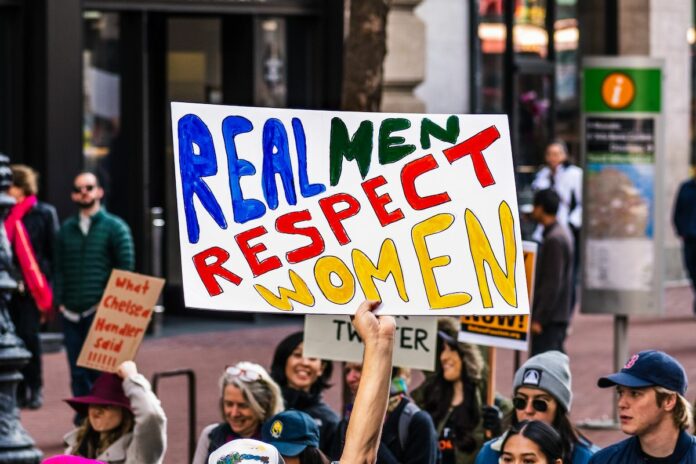Feminism, as a social and political movement, has sought to deconstruct gender hierarchies and advocate for women’s rights. The ethos of feminism fundamentally involves dismantling systemic inequities, challenging patriarchal structures, and engaging men as allies in the fight for gender parity. Yet questions persist: Why don’t we observe a parallel movement labeled as “feminist-like” for men? This inquiry is multifaceted and requires nuanced exploration. Let’s delve into the sociocultural, psychological, and institutional dimensions that inform this phenomenon.
To fully appreciate why a distinct movement for men operates differently than feminism, one must first comprehend the historical and sociopolitical context from which feminism emerged. Feminism arose as a response to entrenched societal inequities that marginalized women, engendering various waves that focused on legal rights, sexual autonomy, and intersectional identities. Men, in contrast, have traditionally occupied the positions of power and privilege. As a result, the plight of men is seldom framed within the same context of systemic oppression that characterizes women’s experiences. This power differential complicates the prospect of a male movement mirroring feminist objectives.
One important factor is the perception of masculinity and the societal norms that shape it. For centuries, masculinity has been associated with strength, dominance, and emotional stoicism. These norms inherently discourage vulnerability and open dialogue, both of which are vital to effective advocacy. Men often grapple with emotional isolation, resulting from societal pressures to conform to rigid gender roles. When emotionality is stigmatized, the potential for men to engage in nurturing movements is severely curtailed. Consequently, a “feminist-like” movement dedicated to men may be perceived as a deviation from normative masculinity, thereby stunting its potential growth.
Additionally, the existing paradigms surrounding gender have led to a misconstrued interpretation of men’s issues. “Men’s rights” movements often arise as reactive positions against feminist advancements, emphasizing a zero-sum perspective on gender dynamics. Such groups frequently focus on perceived grievances dovetailed with an antagonistic attitude towards feminism. By framing men’s issues in combative terms, these movements dilute the possibility of collaborative discourse surrounding gender equity.
The concept of gender equity, rather than strict equality, warrants consideration in this context. Gender equity acknowledges that men and women face different challenges and experiences due to societal expectations and power structures. Men, particularly from certain socioeconomic and racial backgrounds, may encounter unique forms of distress, such as the pressure to fulfil traditional roles as breadwinners or the stigma associated with seeking emotional support. A comprehensive movement for men might thus center on redefining masculinity, thereby fostering environments where emotional vulnerability and dialogue become paramount.
At this juncture, it is essential to explore initiatives that encourage a reconfiguration of masculinity. Programs that promote positive masculinity and encourage men to reject harmful stereotypes are burgeoning, focused on engagement rather than separation. Such initiatives emphasize holistic well-being and emotional intelligence. The movement toward positive masculinity seeks to alleviate the pressure on men to conform to limiting stereotypes, demonstrating how diverse expressions of masculinity can enhance personal relationships and foster social cohesion.
Although glimpses of pro-feminist male activism exist, they often remain obscured by a lack of visibility and organizational framework akin to feminist movements. Various organizations, like MenEngage and the White Ribbon Campaign, strive to dismantle harmful gender norms while enlisting men as allies in the feminist cause. However, these efforts are frequently relegated to the periphery of public discourse. The absence of a prominent male-focused advocacy vehicle diminishes the visibility of such movements, thus impeding the establishment of a cohesive agenda aimed at addressing men’s issues within the broader context of gender equity.
Another crucial aspect of this discourse is intersectionality, which captures the complexities of identity beyond gender alone. The interplay of race, class, and sexuality further complicates the landscape of gender discourse. For example, men of color face distinct societal challenges and often experience discriminatory practices that hinge upon their race and class standing. Consequently, a universal “man’s movement” may not encapsulate the varied experiences of masculinity, rendering it less effective in its objectives. The movement must incorporate intersectional perspectives to ensure that it resonates with a diverse demographic.
Financial stressors, familial obligations, and mental health challenges are prevalent among men, yet societal expectations often counsel silence. Inadequate services for men grappling with mental health issues underscore a need for advocacy that specifically addresses such concerns, but often, these discussions are drowned out by the more prominent narratives surrounding women’s rights. This silence often exacerbates the stigmas surrounding mental health, with men feeling isolated in their struggles. Developing a supportive framework is invaluable for encouraging open discussions surrounding these issues, which could thrive in a male-centric movement structured around mentorship, peer support, and community engagement.
While the notion of a “feminist-like” movement for men may initially evoke skepticism, it is crucial to understand that such a movement need not exist in opposition to feminism. On the contrary, it can operate synergistically, bridging the gap between varied gender experiences. Collaboration would entail reframing masculinity in ways that align with feminist values, fostering an environment conducive to promoting gender equity comprehensively. By revealing the interdependence of gender experiences, a male-focused movement can contribute to a more equitable society without undermining the foundational tenets of feminism.
In summary, while the absence of a discernible “feminist-like” movement for men may stem from historical, cultural, and institutional complexities, it also presents an opportunity for growth and transformation. Engaging men in conversations about gender equity is essential for dismantling the barriers that perpetuate marginalization, not only for women but for men as well. This reformation of masculinity may yield a cultural shift that emphasizes empathy, inclusivity, and cooperation. As society progresses, cultivating spaces where men can delve into their own experiences, articulate struggles, and actively participate in dialogue surrounding gender issues can lead to a richer understanding of equity in all its forms. The symbiotic relationship between feminism and a pro-active male movement holds the promise of an enriched societal fabric, wherein respect and understanding transcend divisions, facilitating an environment for collective thriving.





























